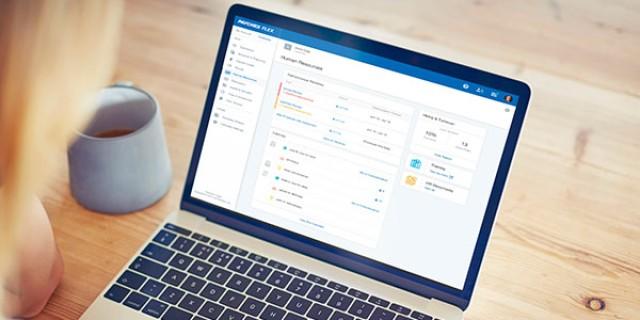- Finanzas
- Artículo
- Lectura de 6 minutos
- Last Updated: 02/11/2025
How To Manage Cash Flow in Retail Businesses

Table of Contents
A customer swiping their card is just the beginning of cash flow in retail business. While sales might be soaring, here's a reality check: revenue alone doesn't guarantee success. Managing a retail operation requires balancing inventory purchases, employee payroll, rent, and other expenses against unpredictable sales patterns and seasonal fluctuations. Your suppliers need payment now, but your revenue may not arrive for weeks or even months.
Successful retailers master more than just sales — they build systems to monitor, predict, and optimize their cash flow at every stage. Smart planning helps you navigate slow-season doldrums, jump on growth opportunities, and build a business that stands the test of time.
What Is Retail Cash Management?
Each day, your retail business processes transactions, manages bank deposits, balances accounts, and handles cash operations. These tasks form the foundation of retail cash management — the structured approach to monitoring and controlling money as it moves through your business. Cash management touches every aspect of your company, from reconciling in-store registers to processing digital payments and overseeing vendor transactions.
Cash flow — the money that goes in and out of your business — is closely related to cash management. Understanding cash flow movements allows you to anticipate slow periods and prepare for major expenses. It also gives you clarity on exactly where your money is at any given moment so you can make confident decisions about business growth.
How Does Cash Flow Work in Retail?
Cash flow in retail business goes through multiple channels. Your business might receive money from in-store purchases, online sales, and wholesale orders. Meanwhile, you pay suppliers, cover operational costs, and pay for increases in inventory — often before seeing revenue from those investments.
To grasp the concept of how cash flow works, it helps to think of your business like a water tank with multiple pipes. Money flows in through sales channels and flows out through expenses. Sometimes, the tank fills quickly (like during peak seasons), while other times, the outflow is more than the inflow.
Understanding these patterns helps you plan when to make big purchases, how much inventory to stock, and when you might need additional funding.
Cash Flow Challenges for Retail Businesses
Cash flow challenges can threaten even the most profitable businesses. Customers pay for your goods, generating immediate income, while you've already paid for those goods, your bills, and your rent weeks before. This timing mismatch between when you spend and when you earn creates the core challenge of retail cash flow.
Here's what makes managing retail cash flow particularly complex:
- Seasonal sales swings: Small businesses generate up to 50% of annual revenue during holidays, while seasonal retailers earn 70% to 90% of yearly sales in just a few months yet still need to cover fixed costs like rent and payroll year-round.
- Poor inventory management: Poor inventory decisions can lock up valuable cash. Overstock situations tie up money in unsold products while running out of stock leads to missed sales and frustrated customers.
- High return rates: Returns have a ripple effect, draining your cash reserves through refunds while creating extra staffing and restocking costs.
- Mismatched expense timing: Fixed payment dates for rent, utilities, and payroll limit your ability to strategically time expenses around your cash availability, forcing you to maintain higher cash reserves.
Tips for How To Manage Cash Flow for Retail Businesses
While every retail business faces unique challenges, having the right systems in place can ease the squeeze of tight cash flow. Here are strategies to actively manage cash flow in a retail business.
Retail Cash Flow Forecasting
A cash flow forecast for retail business helps you spot potential problems before they arise. With this strategy, you can map out expected income and expenses to know when you might need extra cash or when you can safely invest in growth.
Monitor Operating Expenses
Keep a close eye on your operating costs, such as rent, utilities, and wages, and look for opportunities to trim expenses. For example, you might adjust store hours during slow periods or negotiate better vendor rates.
Optimize Inventory Levels
Inventory management systems can help you track stock levels and mitigate having too much or too little product on hand, keeping your inventory lean but sufficient. Use sales data to analyze fast–moving products and seasonal trends. For slower-moving items, consider drop-shipping options and negotiate consignment arrangements with suppliers when possible.
Strengthen Pricing Strategy
Regular price reviews protect your cash flow by ensuring you're covering costs and maintaining healthy margins, even when suppliers raise costs or market conditions change. Minor, strategic price adjustments add up quickly across your product line and can significantly impact your bottom line over time.
Build a Cash Reserve
Set aside a portion of profits during good months to help cover leaner periods and create a financial safety net for your business. This buffer helps you stock up on inventory when prices drop, cover unexpected repairs, and keep operations running smoothly during slower months without taking on extra debt.
How To Improve Cash Flow for Your Retail Business
Even if you manage your business perfectly, you may need extra cash occasionally. Understanding your funding options helps you make smart choices when you need additional working capital.
Business Loans for Retailers
Traditional retail financial services offer bank loans that get you access to cash with predictable monthly payments. When you're looking at making a major move — like expanding your store, upgrading equipment, or stocking up for peak season — a small business loan offers reliable funding for retail businesses.
Funding Solutions for Retailers
It's nearly impossible to get cash flow right 100% of the time, and retail business funding can help fill the gap when you need extra cash to seize opportunities. Online lenders, business credit lines, and merchant cash advances can put money in your account faster than traditional banks. Because rates and terms vary, make sure to watch the fine print.
Invoice Factoring for Retailers
Rather than wait weeks for customer payments to hit your account, consider invoice factoring. It turns your 30-, 60-, or 90-day payment terms into immediate capital. Factoring companies buy invoices at a discount, typically giving you 80% to 90% of the funds within two business days.
Inventory Factoring for Retailers
Inventory factoring lets you leverage your existing inventory to improve cash flow. While it's more expensive than traditional loans, inventory financing for retailers is a viable option when you need quick capital. It may also be easier to get than conventional financing since you're using current stock as collateral.
Fine-Tune Business Strategy
Automating time-consuming and complex tasks can speed up your daily operations. Then, you can focus on what drives profit: adjusting prices, removing slow-moving inventory from your reorder list, and using sales data to predict future inventory needs.
Make It Easy for Customers To Pay
In addition to cash, checks or credit cards consider accepting other payment options, such as PayPal®, Apple Pay®, and other digital payment options, which may result in faster receipt of funds from your customers.
Trim Business Expenses
Look for ways to reduce your regular expenses without cutting corners. For example, you might lease or buy refurbished equipment instead of buying new, talk to your suppliers about better payment terms, and ask for price breaks in exchange for a longer-term partnership. It might seem like small savings, but it can add up to better cash flow for your retail business.
The Importance of Managing Retail Business Cash Flow
You might be turning a profit on paper, but can you make payroll next week? This question keeps many retail owners up at night — and it's why managing your company's cash flow should rank high on your to-do list. Our 2025 Priorities for Business Leaders survey reveals that 86% of business leaders worry about economic uncertainty, but strong retail cash flow management can help you sleep easier.
Get the Solutions Your Retail Business Needs
When you get a chance at a golden opportunity, you don't want your cash tied up in unpaid invoices or daily operations. Paychex helps retailers like you turn that situation around. Our invoice factoring turns unpaid invoices into working capital while our HR and payroll solutions handle your back-office tasks — because your next big opportunity shouldn't have to wait for yesterday's invoices to get paid.
Tags







